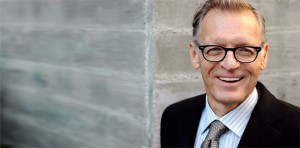 At SXSW, Hollywood entertainment lawyer Michael Donaldson showed how his firm is applying the copyright doctrine of fair use—the right to use copyrighted material without permission or payment, within limits—to films that incorporate non-fiction elements, even when they are not documentaries.
At SXSW, Hollywood entertainment lawyer Michael Donaldson showed how his firm is applying the copyright doctrine of fair use—the right to use copyrighted material without permission or payment, within limits—to films that incorporate non-fiction elements, even when they are not documentaries.
Since creating the Documentary Filmmakers’ Statement of Best Practices in Fair Use in 2005, documentarians have widely applied fair use to their filmmaking. Donaldson reminded workshop participants of the Statement, and suggested another shortcut. His firm uses three questions, as is discussed in his book Clearance and Copyright:
- Does the asset illustrate or support a point you are trying to make in your film?
- Are you using as much of the asset as is reasonably appropriate to do that?
- Would your use be clear to the average viewer?
 Fair use is now well established as industry practice in documentary. But what about works that are grounded in or invoke real life but also are scripted? Donaldson suggests that you use the category “non-fiction” to guide your reasoning about fair use in that case.
Fair use is now well established as industry practice in documentary. But what about works that are grounded in or invoke real life but also are scripted? Donaldson suggests that you use the category “non-fiction” to guide your reasoning about fair use in that case.
Some films, like biopics, docudramas and historical dramas, are firmly anchored in real-life experience. In that case, fair use might be eligible. For instance, in the scripted film Steve Jobs, the filmmakers could not get permission to use the famous “1984” Apple computer advertisement, which was critical to the story. They employed it under fair use. In Chavez, the makers interwove news clips from the time with the actual events to strengthen their claim to the historical integrity of the film; they also employed fair use.
Some films are pure fiction, but refer to or otherwise employ real-world elements in some way as a plot element. In Midnight in Paris, a character who has slipped in time and actually encounters Faulkner blurts out a line of his; when the Faulkner estated sued, they lost, on fair use grounds. In the film Banshee, about investigative journalists pursuing a story about military use of soldiers for testing, news footage from the time was used, under fair use, to ground the story in the reality of events.
When films are shot on location, even when they are fiction, there are strong arguments for fair use in some cases. For instance, when shooting outside—think about the 2007 Once—a wide range of copyrighted material is incidentally caught in the frame, a clear fair use. As well, Donaldson argued, when renting a wealthy person’s home for shooting, in order to represent a wealthy person’s home, leaving the home as it is (copyrighted artwork on the wall, for instance) is eligible for fair use. You are capturing the taste and sensibility of a wealthy person.
You even may have a fair use reason to incorporate copyrighted material in a fiction work shot on a sound stage, he said. Several lawsuits have been resolved for fair users, including Maid in America and Seven.
